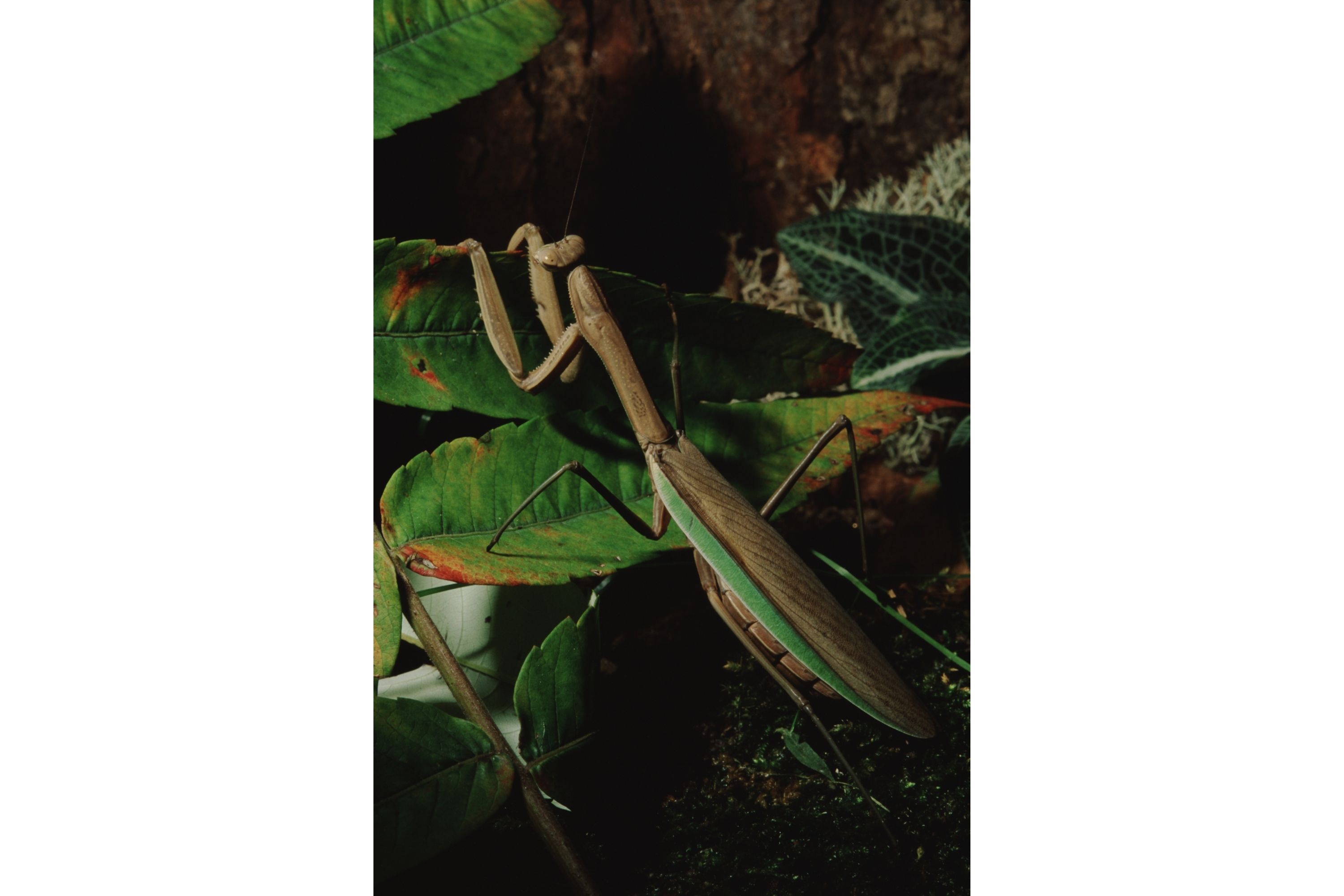Chinese mantis
(Tenodera sinensis)

Description
The Chinese mantis (Tenodera sinensis) is a species of mantis native to Asia and the nearby islands. In 1896 this species was accidentally introduced by a nurseryperson at Mt. Airy near Philadelphia, United States. Tenodera sinensis often is erroneously referred to as Tenodera aridifolia sinensis because it was at first described as a subspecies of Tenodera aridifolia, but Tenodera sinensis is now established as a full species. Tenodera sinensis feeds primarily on other insects, though adult females sometimes catch small vertebrates. For example, they have been observed feeding on hornets, spiders, grasshoppers, katydids, small reptiles, amphibians, and even hummingbirds. Like most mantids, they are known to be cannibalistic. One study found that cannibalism occurs in up to 50% of matings. These mantids have been observed eating the larvae of monarch butterflies, while discarding the entrails. The Chinese mantis is a long, slender, brown and green praying mantis. It is typically longer than other praying mantis species reaching just over 11 cm (4.3 in), and is the largest mantis species in North America (spread throughout the Northeast United States). Its color can vary from overall green to brown with a green lateral stripe on the borders of the front wings in the brown color form. In low light the eyes of the mantis appear black, but in daylight appear to be clear, matching the color of the head. Chinese mantids look similar to another mantis species that has been introduced to the United States, the narrow-winged mantid (Tenodera angustipennis). Tenodera sinensis and Tenodera angustipennis are similar in appearance, however you can tell them apart by locating a spot in between their front legs. If it is yellow then it is a Chinese mantis but if it is orange then it is a narrow-winged mantis. The female can produce several semi-spherical oothecae, roughly 2 cm (0.8 in) in diameter, containing up to 400 eggs. The oothecae are often affixed to vegetation such as bushes and small trees. This mantis is native to China, Japan, the Korean Peninsula, Micronesia and Thailand. Japanese 'Oo-kamakiri' ("large mantis") is known as Tenodera aridifolia, but this species can be considered T. sinensis. Chinese mantises hatch in the spring, eat, grow, and molt through the summer, and lay eggs at the end of summer. When it gets too cold, they die, only living around a year long.
Taxonomic tree:







